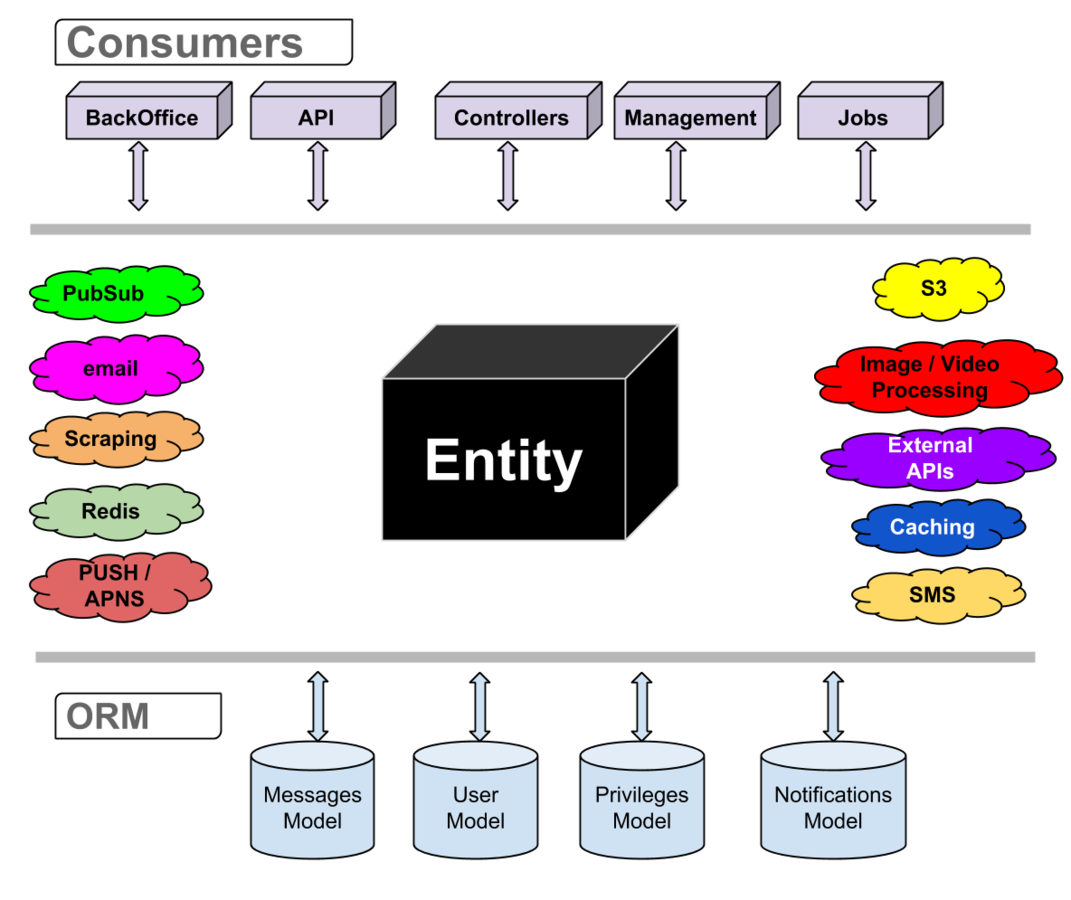Entities
The Theory
Who am I
- Working for over 3 years on Node.js
- Authored >40 NPM packages
- Contributed to even more
- CTO Insight Replay
- Founder netscan.co
@thanpolas

The MVC bankruptcy
@thanpolas

- Models represent a schema
- Models are FAT
- Business logic leaks to Controllers
- Handling of higher level operations
- MVC is not enough today
The MVC bankruptcy
@thanpolas

- Active Record (Single Table)
- Validations
- Relations
- Methods (db related)
- It's an ORM configuration
The MVC bankruptcy
Models represent a schema
@thanpolas

- You gotta see it to believe it
- Ok, I bet you've seen it!
- It's ugly
- It's not entirely the Model's fault
- Decouple
The Model bankruptcy
Models are FAT (core models > 4k lines)
@thanpolas

- Send verification email
- Perform multiple table OPs
-
Talk to services
- memcache
- pupsub
- redis
The MVC bankruptcy
Business logic leaks to Controllers
@thanpolas

The MVC bankruptcy
Business logic leaks to Controllers
How do you run the operation from a
- Cron Job?
- Back office?
- API?
- CLI?
How do you test?
@thanpolas

- Multiple tables involved
- Multiple Services involved
- Complex Auth Schemes
- Real Time
The MVC bankruptcy
Handling of higher level operations
@thanpolas

- Way more complex flows
- Service oriented design
- SaaS / PaaS Infrastructure
- Multiple inputs
The MVC bankruptcy
MVC is not enough today

@thanpolas

Ok, now what?
@thanpolas

Decouple
Separate
Draw Lines
@thanpolas

Meet
MVCe
@thanpolas



@thanpolas

Think of Entities as...
- Pipes
- Data transformers
- Operation plexers
- Switches
- Adaptors
- Aggregators
Entities are inspired by the Service Layer design pattern
@thanpolas

Core Principles
- Human readable API
- Normalised Input
- Normalised Output
@thanpolas

Core Principles
Human readable API
userEnt.create(udo);
userEnt.delete(uid);
userEnt.sendMessage(fromId, toId, message);
videoEnt.process(videoPath);- Methods that make sense
- Think action not operation
@thanpolas

Core Principles
Normalised Input
userEnt.create({
firstName: "Thanasis",
lastName: "Polychronakis",
email: "thanpolas@gmail.com",
});- Well documented expectations
- No need to be validated
@thanpolas

Core Principles
Normalized Output
console.log(udoOut);
{
"id": "3kdp349r7fhw",
"firstName": "Thanasis",
"lastName": "Polychronakis",
"email": "thanpolas@gmail.com",
}- Aggregates datasets
- Normalizes db idiomacies
- Consistency
@thanpolas

CRUD API
@thanpolas

The CRUD Primitives
-
create()
-
read()
-
readOne()
-
readLimit()
-
update()
-
delete()
-
count()
@thanpolas

Validations
it depends™
@thanpolas

Validations
- Is there an ORM CRUD OP?
- Perform actions before or after ORM?
- Do you trust your input?
- Outside world?
- Internal invocation?
- Better not to trust anybody
@thanpolas

Are entities only for the backend?
NO
@thanpolas

REMEMBER
Entities are
- Normalizers
- Aggregators
- Pipes
- Your business logic
@thanpolas

Entities, The Theory, BG WebSummit
By thanpolas
Entities, The Theory, BG WebSummit
The theory behind entities
- 645



